Cathedrals stand as remarkable symbols of faith, history, and architecture, with many dating back thousands of years. These awe-inspiring structures were often built to honor religious figures or significant events, showcasing the artistry and devotion of their creators. Over time, they have become not only places of worship but also cultural and historical landmarks, attracting visitors from around the world. Some of the oldest cathedrals still in existence offer a glimpse into the early days of Christianity, preserving ancient traditions and stories within their walls. Their enduring presence reminds us of the resilience of human craftsmanship and the deep roots of spiritual expression.
Etchmiadzin Cathedral, Armenia
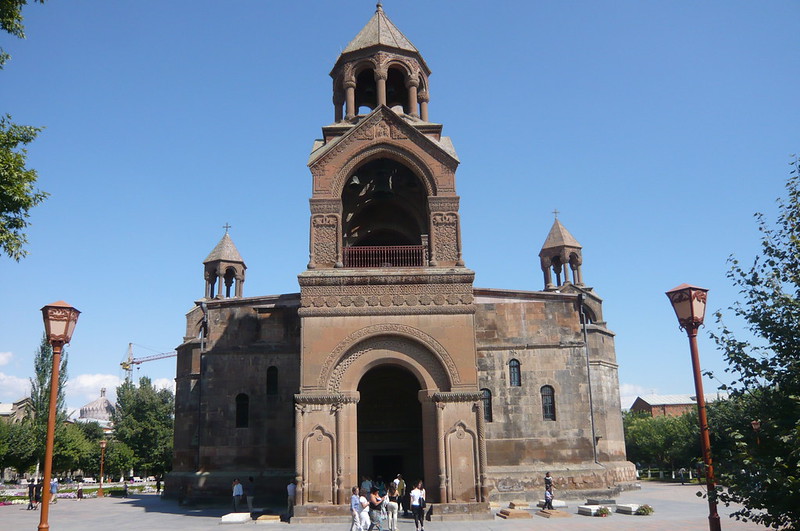
Built in 301 AD, Etchmiadzin Cathedral is often regarded as the first cathedral ever constructed. Located in Vagharshapat, Armenia, it serves as the spiritual heart of the Armenian Apostolic Church. Its architecture blends early Christian and Armenian styles, showcasing intricate stone carvings and a stunning altar. The cathedral was constructed under the reign of King Tiridates III after Armenia adopted Christianity as a state religion. Despite centuries of invasions, it has retained its historical significance and undergone careful restorations. Inside, the cathedral houses sacred relics, including a piece of Noah’s Ark. Today, Etchmiadzin remains a UNESCO World Heritage Site and a pilgrimage destination for Christians worldwide.
Church of the Nativity, Bethlehem
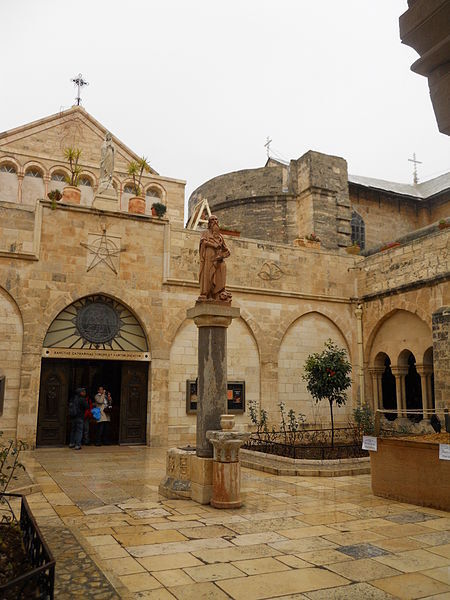
The Church of the Nativity was completed in 333 AD during the reign of Emperor Constantine and Empress Helena. Situated in Bethlehem, it is built over the site traditionally recognized as Jesus Christ’s birthplace. Its original Roman-style structure has evolved through Byzantine and Crusader influences over the centuries. Within the church, visitors can see the Grotto of the Nativity, marked by a 14-point star. The building has survived earthquakes and invasions, though it has required significant restoration efforts. UNESCO designated it as a World Heritage Site in 2012, emphasizing its universal religious importance. Pilgrims from around the world continue to visit this sacred site annually.
Cathedral of Trier, Germany
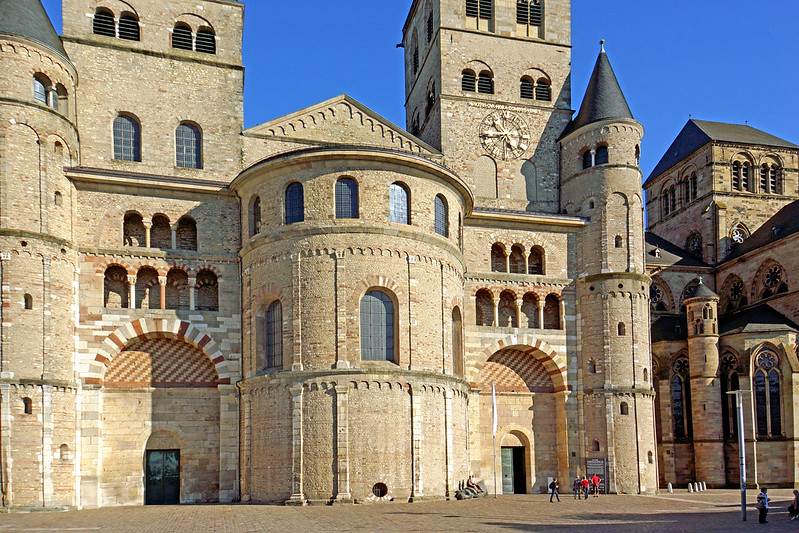
The Cathedral of Saint Peter in Trier, Germany, was built in 340 AD and is the oldest cathedral in the country. Originally part of a Roman palace complex, its walls include remnants of ancient Roman bricks. Over the centuries, Romanesque, Gothic, and Baroque elements were added, making it a mosaic of architectural styles. Housing the Holy Robe, believed to be the tunic of Christ, it attracts thousands of pilgrims each year. The cathedral also survived extensive damage during World War II but was meticulously restored. Its impressive nave and stunning organ remain highlights for visitors. Trier Cathedral is a UNESCO World Heritage Site and a cornerstone of German Christian history.
St. George’s Cathedral, Ethiopia
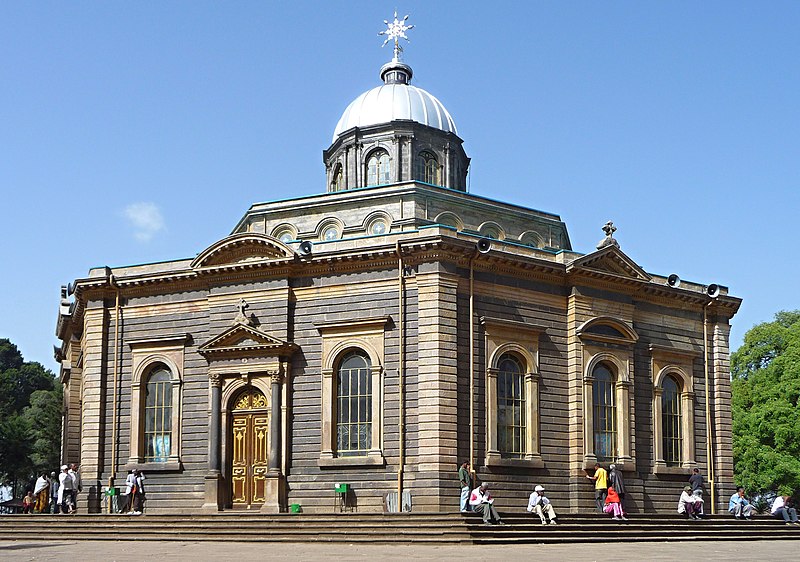
St. George’s Cathedral in Lalibela, Ethiopia, was completed in the 4th century. This rock-hewn church is carved entirely from a single piece of volcanic rock, showcasing the ingenuity of ancient Ethiopian architecture. It is dedicated to Saint George, the patron saint of Ethiopia. Unique cross-shaped windows and intricate carvings adorn the cathedral’s interior. Lalibela’s network of rock churches, including St. George’s, is a UNESCO World Heritage Site. The cathedral remains an active place of worship and a pilgrimage site during Ethiopian Orthodox Christian festivals. Its underground design has helped it survive centuries of natural and human threats. Visiting St. George’s Cathedral offers a glimpse into a rich spiritual and architectural tradition.
Basilica of Saint John, Turkey
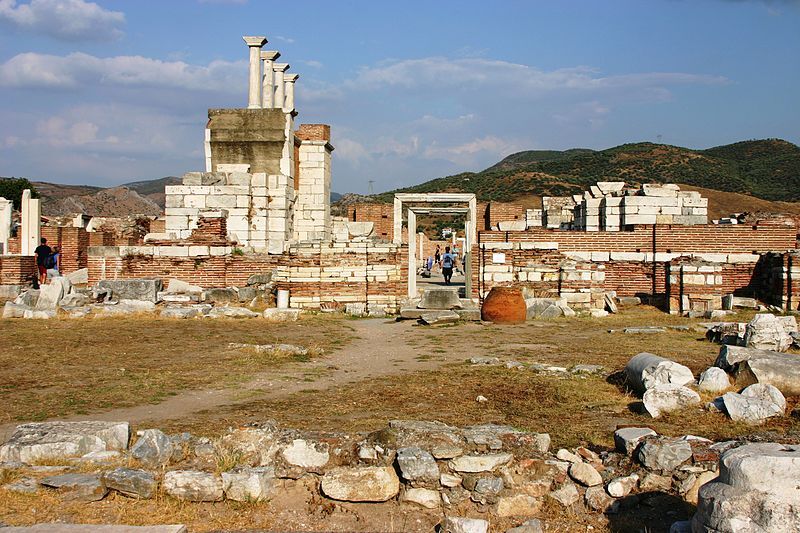
Built around 360 AD, the Basilica of Saint John stands near Ephesus, Turkey, on the site where the Apostle John is said to have been buried. Emperor Justinian later expanded the church into a grand basilica in the 6th century. Though mostly in ruins today, its original layout and marble remnants reveal its former splendor. The church also once housed a reliquary believed to contain the Apostle’s remains. Positioned on a hilltop, it provides breathtaking views of the surrounding valley. Pilgrims from across the world visit its ruins to honor Saint John. Efforts to preserve its remains continue, emphasizing its historical and spiritual significance.
Basilica of St. Mary Major, Italy
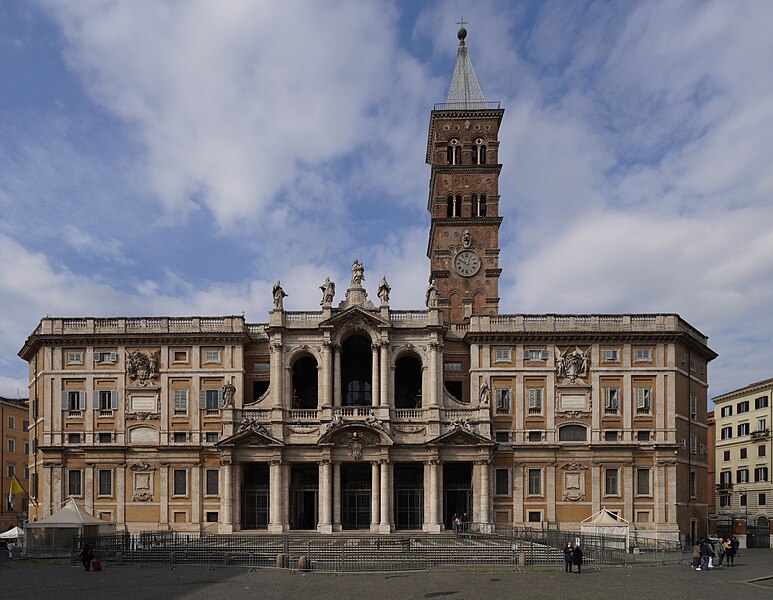
The Basilica of St. Mary Major in Rome, Italy, was built in 432 AD and is one of the four major papal basilicas. It was constructed following the Council of Ephesus, which affirmed Mary as the Mother of God. Its mosaics, depicting scenes from the Old and New Testaments, are some of the oldest Christian artworks in Rome. The church’s bell tower, added in the 14th century, is the tallest in Rome. It has undergone numerous restorations but retains its original grandeur. The basilica is renowned for its role in Marian devotion and papal liturgies. Its opulent gold ceiling and relic of Christ’s manger draw visitors year-round.
Basilica of Santa Sabina, Italy

Constructed between 422 and 432 AD, the Basilica of Santa Sabina is one of the best-preserved early Christian churches in Rome. Situated on Aventine Hill, it offers stunning views of the city. Its unadorned façade contrasts with an intricate interior featuring original mosaics and marble columns. A 5th-century wooden door, depicting biblical scenes, is one of its most famous features. Over the centuries, it has served as a model for early basilica architecture. Santa Sabina remains an active Dominican church and a place of theological study. Its serene atmosphere provides a glimpse into the simplicity of early Christian worship.
Saint Thaddeus Monastery, Iran
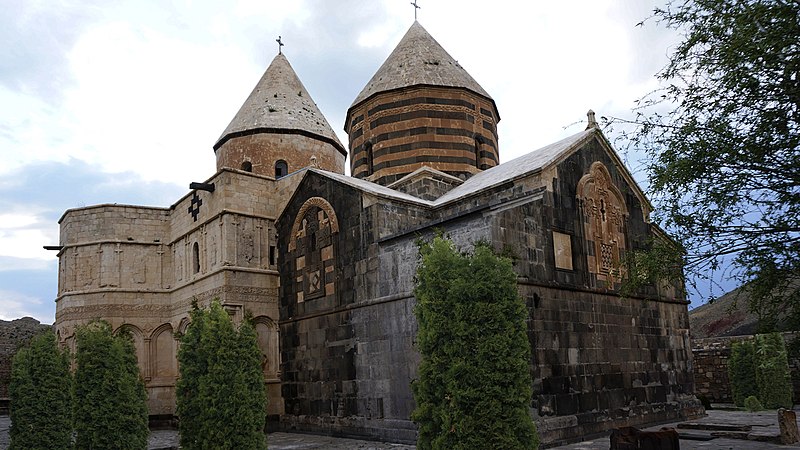
Saint Thaddeus Monastery, located in northwest Iran, dates back to the 4th century. It is believed to mark the site where Saint Thaddeus, one of Christ’s apostles, was martyred. The cathedral’s unique architecture combines Armenian and Persian influences, with black and white stone walls. It has been a pilgrimage site for centuries, particularly for Armenian Christians. Although much of the original structure was destroyed by earthquakes, it has been carefully reconstructed. The annual Feast of St. Thaddeus draws thousands of pilgrims each July. It stands as a symbol of resilience and religious heritage in a predominantly Muslim country.
Cathedral of Ravenna, Italy
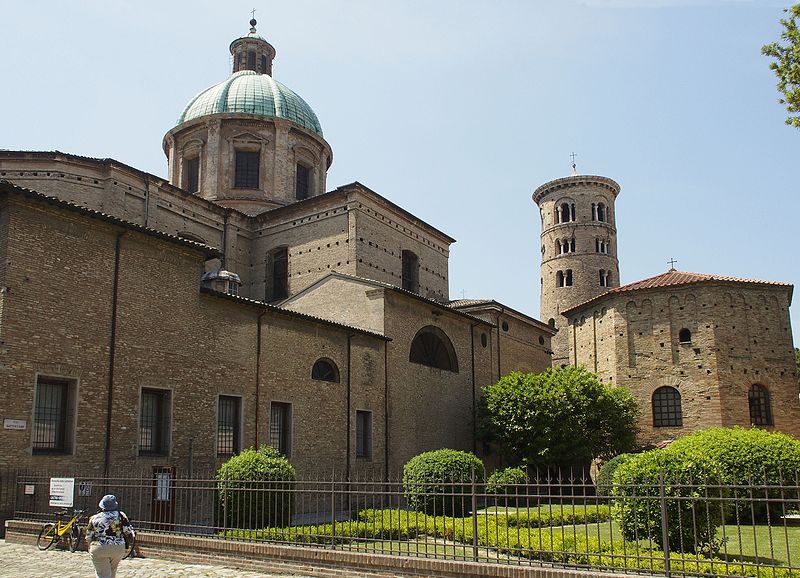
Constructed in 407 AD, the Cathedral of Ravenna is one of Italy’s oldest Christian monuments. Known for its elaborate mosaics, it reflects a unique blend of Western and Eastern art. The cathedral’s baptistery features stunning depictions of Christ’s baptism, surrounded by angelic figures. Its walls tell the story of early Christian devotion and Byzantine influence. Over centuries, the structure has been modified, but its core design remains intact. Recognized as a UNESCO World Heritage Site, it is celebrated for its cultural significance. Ravenna Cathedral continues to inspire awe with its historic beauty and spiritual legacy.
San Giovanni in Laterano, Italy
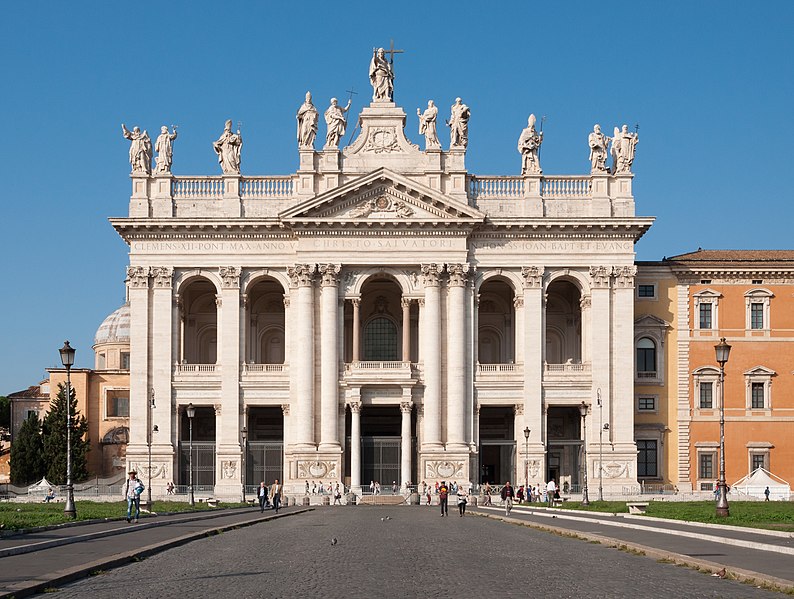
San Giovanni in Laterano, or the Archbasilica of Saint John Lateran, was established in 324 AD in Rome. This cathedral is the official seat of the Bishop of Rome and the oldest of the four major papal basilicas. Its majestic façade, designed in the 18th century, conceals its early Christian origins. Over time, it has witnessed various restorations due to fires and earthquakes. The cathedral’s interior features Baroque artwork, gilded ceilings, and ancient sculptures. Its cloisters, dating back to the 13th century, offer a peaceful retreat for visitors. As the “mother of all churches,” it remains a cornerstone of Catholicism and Christian history.
Basilica of Saints Peter and Paul, Egypt
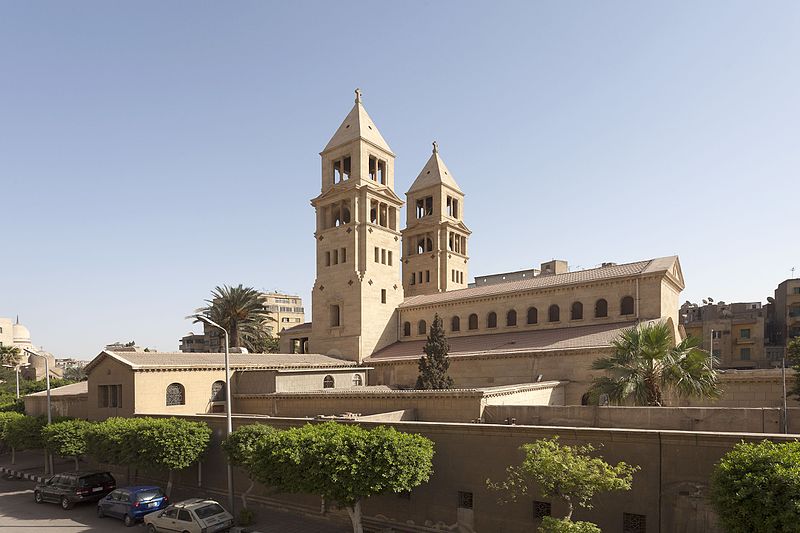
Built in 326 AD, this basilica in Alexandria, Egypt, holds significant historical and religious importance. It was constructed atop the remains of Saint Mark, one of Christianity’s earliest evangelists. Though heavily damaged during various conflicts, parts of its original structure remain visible. The basilica’s design incorporates early Christian and Coptic architectural styles. Over centuries, it has been rebuilt multiple times, adapting to the city’s shifting tides of history. Its significance extends beyond its architecture, as it represents the enduring Christian presence in North Africa. Today, it serves as a beacon of faith for Egypt’s Coptic Christian community.
Cathedral of Tarragona, Spain
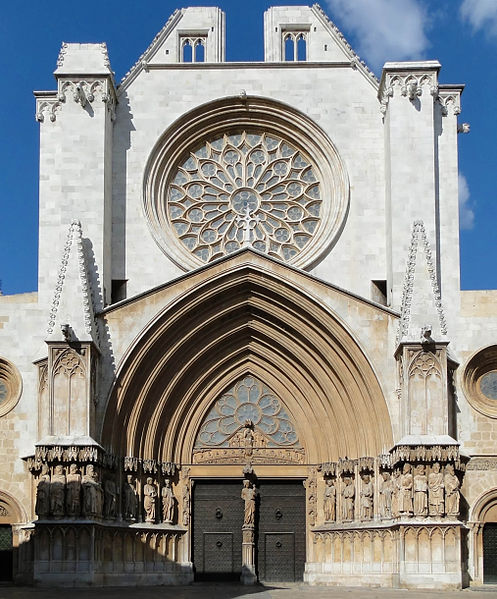
The Cathedral of Tarragona, established around 400 AD, stands on the Iberian Peninsula. It was built on the site of an ancient Roman temple dedicated to Jupiter, symbolizing Christianity’s rise in Spain. Its Romanesque foundation later merged with Gothic architectural elements, creating a blend of styles. Inside, visitors marvel at the intricately carved altarpiece and medieval frescoes. The cathedral also houses an impressive collection of religious artifacts and manuscripts. Tarragona’s cathedral serves as a testament to the area’s layered cultural history. Its strategic hilltop location offers panoramic views of the surrounding city and coastline.
Hagia Sophia, Turkey
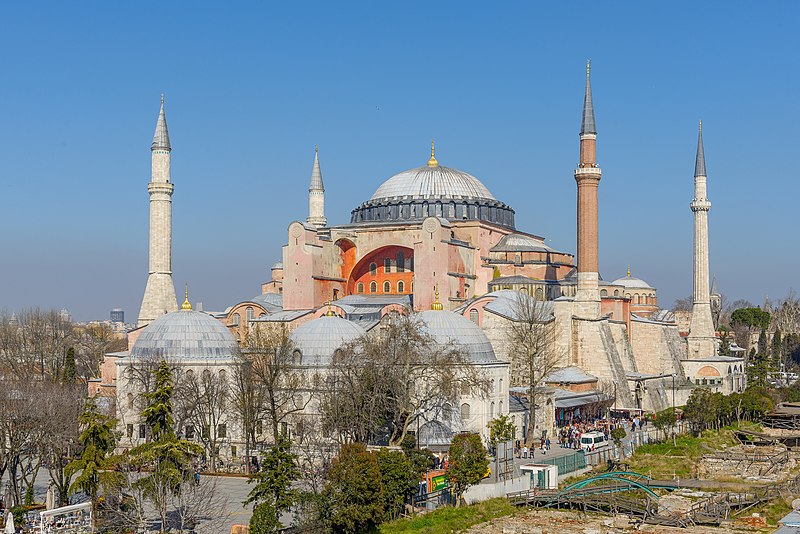
Originally constructed as a Christian basilica in 537 AD, Hagia Sophia in Istanbul, Turkey, is an architectural marvel. Commissioned by Emperor Justinian, it served as the world’s largest cathedral for nearly a thousand years. Its massive dome, mosaics, and marble columns showcase Byzantine artistry. Converted into a mosque in 1453, it retained many Christian elements alongside Islamic features. Today, it functions as a museum, allowing visitors to witness its diverse heritage. Hagia Sophia has survived earthquakes and wars, standing as a testament to resilience. Its rich history and stunning architecture make it one of the most iconic religious structures in the world.
Aqaba Church, Jordan

Dating back to 293 AD, the Aqaba Church in Jordan is believed to be one of the oldest known purpose-built churches. Located near the Red Sea, it predates significant structures like the Church of the Holy Sepulchre in Jerusalem. The church was uncovered in the late 20th century, revealing its simple design with mudbrick walls. Despite its modest size, it played a significant role in early Christian worship in the region. The site provides insight into the humble beginnings of church architecture. Archaeological efforts continue to uncover more about its history. Its historical significance makes it a treasure of early Christianity.
Cathedral of Split, Croatia
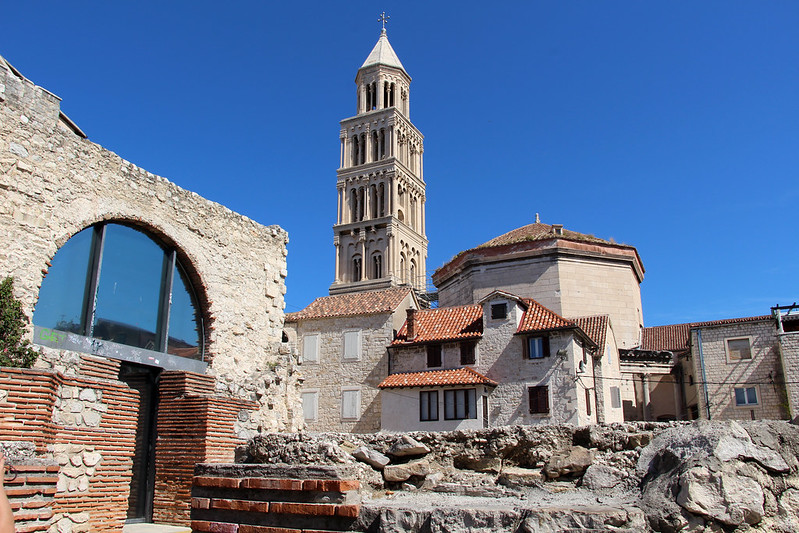
The Cathedral of Saint Domnius, built in 305 AD, is a remarkable example of repurposed architecture. Originally constructed as a mausoleum for the Roman Emperor Diocletian, it was later converted into a Christian cathedral. Its 57-meter bell tower dominates the skyline of Split, Croatia, serving as a symbol of the city’s rich history. The cathedral features a unique blend of Roman, early Christian, and medieval designs. Inside, ancient sarcophagi and altars tell the story of its evolution. It is one of the best-preserved Roman structures still in use today. Visitors often climb its bell tower for breathtaking views of the Adriatic coast.
Cathedral of Zaragoza, Spain

The Cathedral of Zaragoza, or the Basilica of Our Lady of the Pillar, traces its origins to 40 AD, making it one of Christianity’s earliest worship sites. While its current Baroque structure dates to the 17th century, it was built over an earlier Christian chapel. Legend states the Virgin Mary appeared here to the Apostle James, leaving a pillar as a sign of her presence. The cathedral houses stunning frescoes by Francisco Goya, adding artistic depth to its spiritual importance. Its iconic towers and domes dominate the cityscape of Zaragoza. Pilgrims and tourists alike are drawn to its rich history and beauty. It continues to serve as a major religious site in Spain.
St. Stephen’s Cathedral, Austria
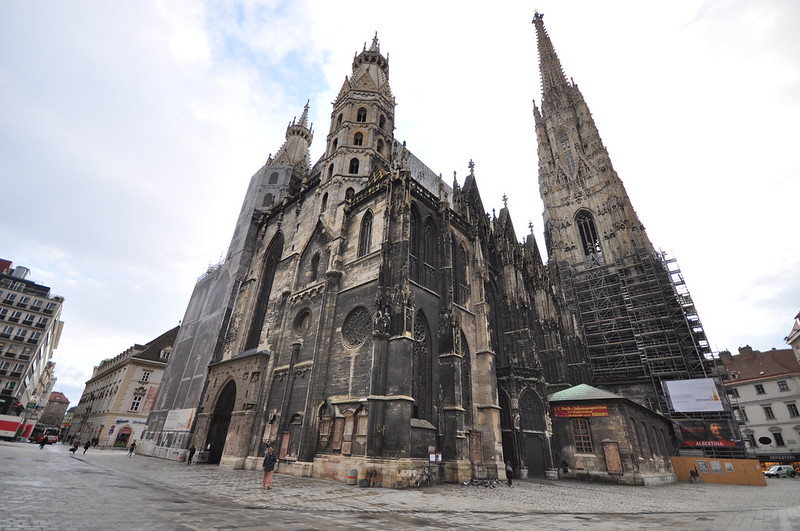
Dating back to 1137 AD, St. Stephen’s Cathedral in Vienna is an iconic landmark. Its towering spire and vibrant tiled roof make it a symbol of Austrian heritage. The cathedral was built over earlier religious structures, with its foundations tracing back to the 4th century. Inside, visitors are greeted by a blend of Gothic and Romanesque elements, with a stunning high altar as the focal point. The cathedral has withstood sieges, fires, and wars, showcasing remarkable resilience. Its underground catacombs add an element of mystery and history to the site. St. Stephen’s remains a vital cultural and religious heart of Vienna.
Monastery of Saint Simeon, Egypt
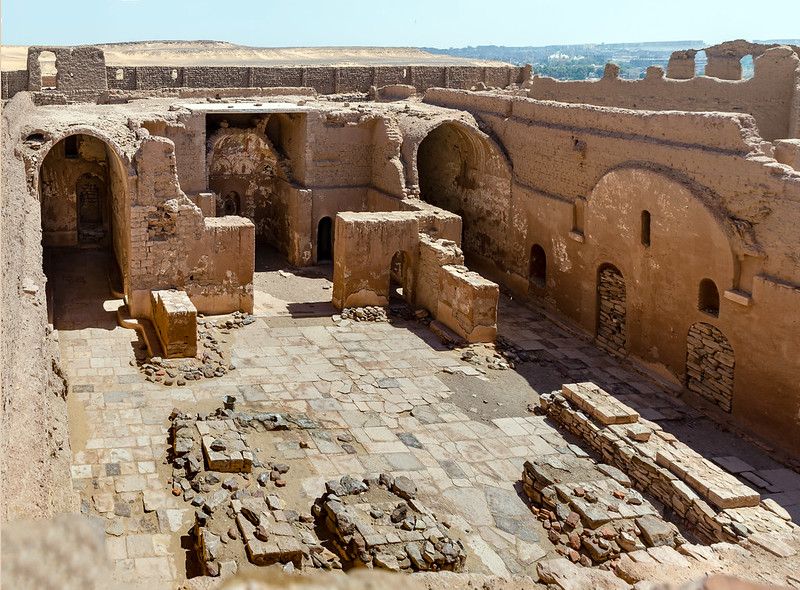
The Monastery of Saint Simeon in Aswan, Egypt, was established in the 6th century, though earlier foundations date back to the 4th century. Perched on a desert hill, it offers stunning views of the Nile River. The monastery was built as a fortress-like structure to protect its inhabitants from nomadic raids. Its ancient frescoes and inscriptions provide glimpses into early Christian monastic life. Though partially in ruins, it retains its spiritual aura and historical significance. Visitors can explore its intricate passageways and ancient cells. It remains a testament to the resilience of monastic communities in harsh environments.
Cathedral of Sées, France
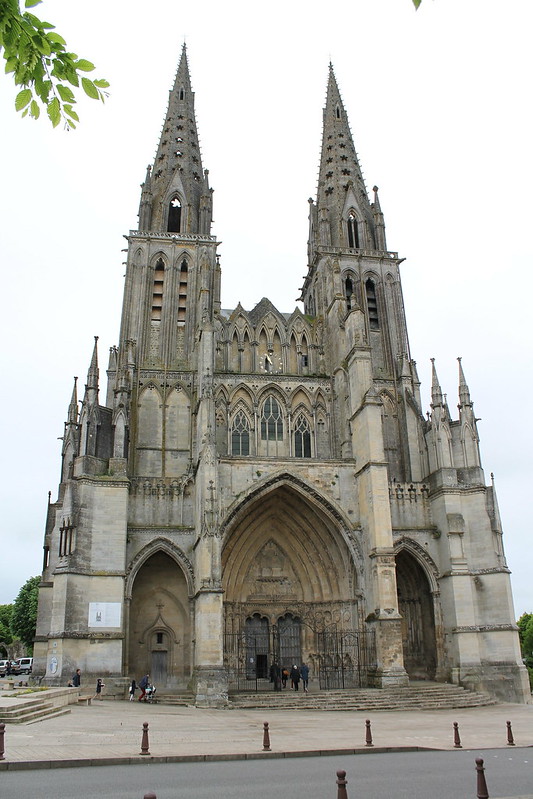
The Cathedral of Sées in Normandy, France, has roots stretching back to the 4th century. It was built on the ruins of a Roman temple and has undergone numerous transformations over the centuries. Its Gothic design, added during later restorations, features elegant spires and intricate stained-glass windows. The cathedral’s interior houses medieval sculptures and relics of local saints. Its central nave offers a sense of grandeur and spiritual serenity. Over time, it became a significant center for Christian worship in northern France. Despite wars and natural disasters, the cathedral has been restored as a beacon of faith and history.
Basilica of Saint Euphemia, Croatia
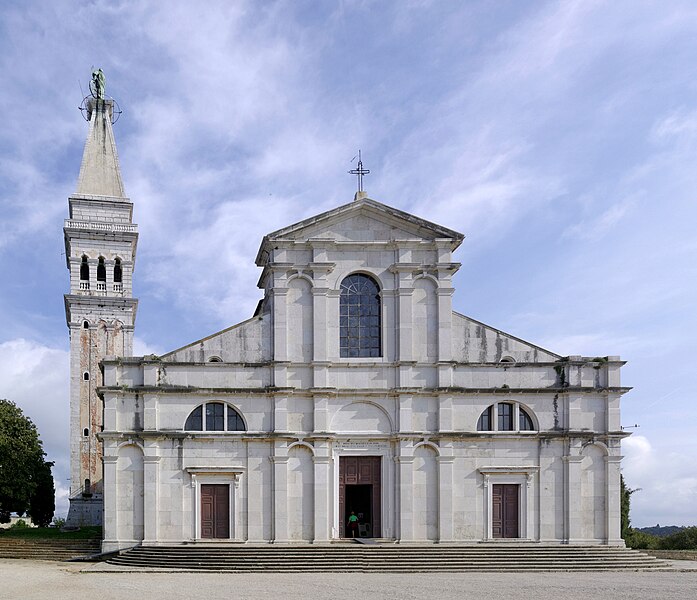
Located in Rovinj, Croatia, the Basilica of Saint Euphemia was completed in the 4th century. This cathedral was built to honor Saint Euphemia, whose remains are housed in a sarcophagus inside. Its Baroque design contrasts with the simplicity of its early Christian origins. Positioned on a hill overlooking the Adriatic Sea, it offers spectacular views. The basilica’s bell tower, modeled after Venice’s St. Mark’s Campanile, is a prominent feature. Inside, ornate altars and frescoes reflect its historical and spiritual richness. It continues to be a focal point for religious ceremonies and cultural events in Rovinj.
This article originally appeared on Rarest.org.
More From Rarest.Org
7 Oldest Crocodiles in The World

Crocodiles are some of the longest-living reptiles on Earth. These ancient creatures have been around for millions of years, evolving little since the time of the dinosaurs. Several crocodiles across the globe have reached remarkable ages, living in captivity or in the wild. Read more.
11 Oldest Bottles of Whisky in The World

Whisky lovers and collectors alike are fascinated by the world’s oldest bottles. These rare treasures hold history and craftsmanship in every drop, each showcasing age-old techniques and exceptional aging. Read more.
10 Legendary Restaurants That Closed Their Doors for Good
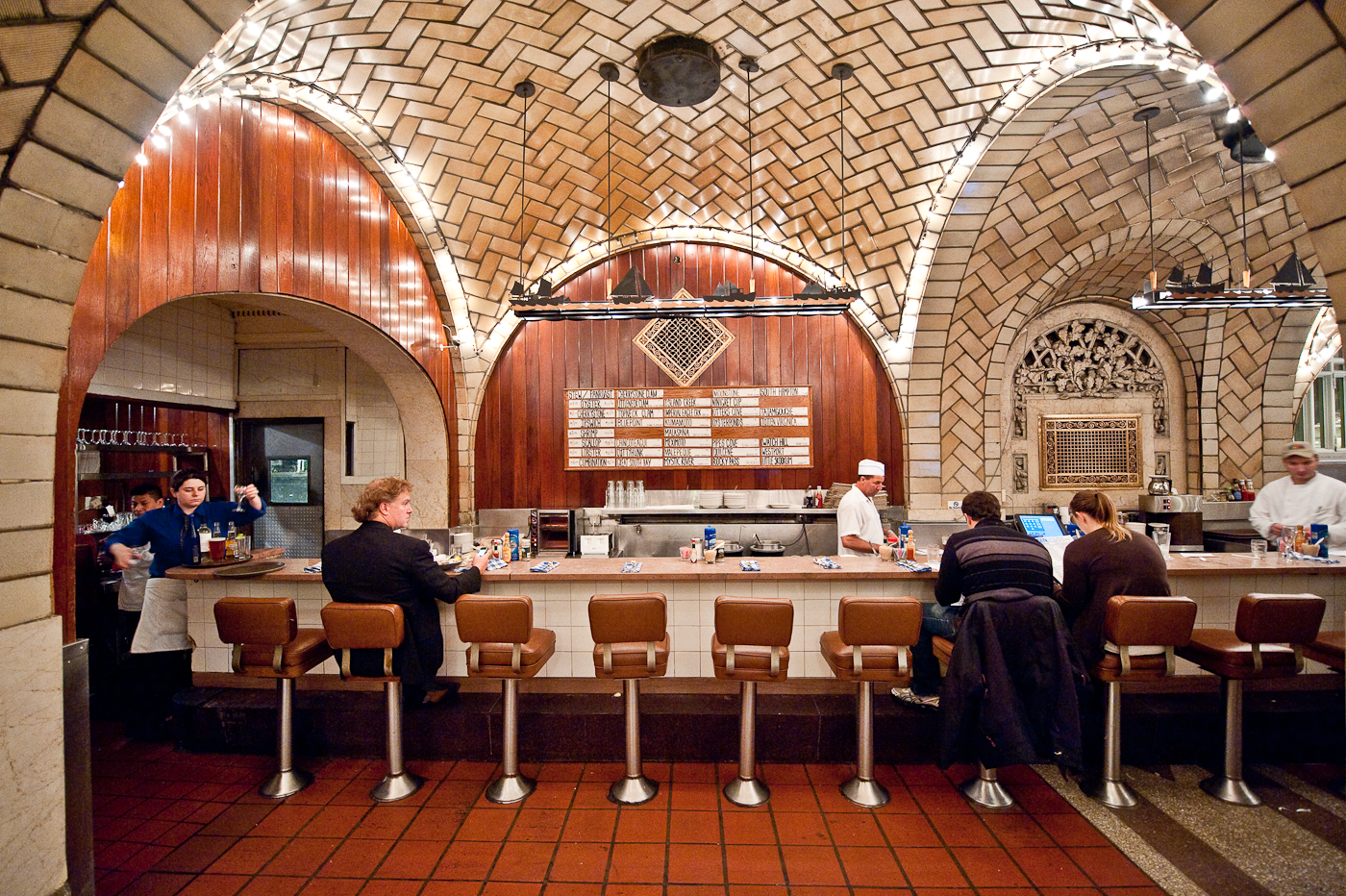
Over the years, many iconic restaurants have left lasting memories with their guests, but some have sadly closed their doors for good. These establishments were once at the center of the culinary world, offering unique experiences and flavors. Read more.
